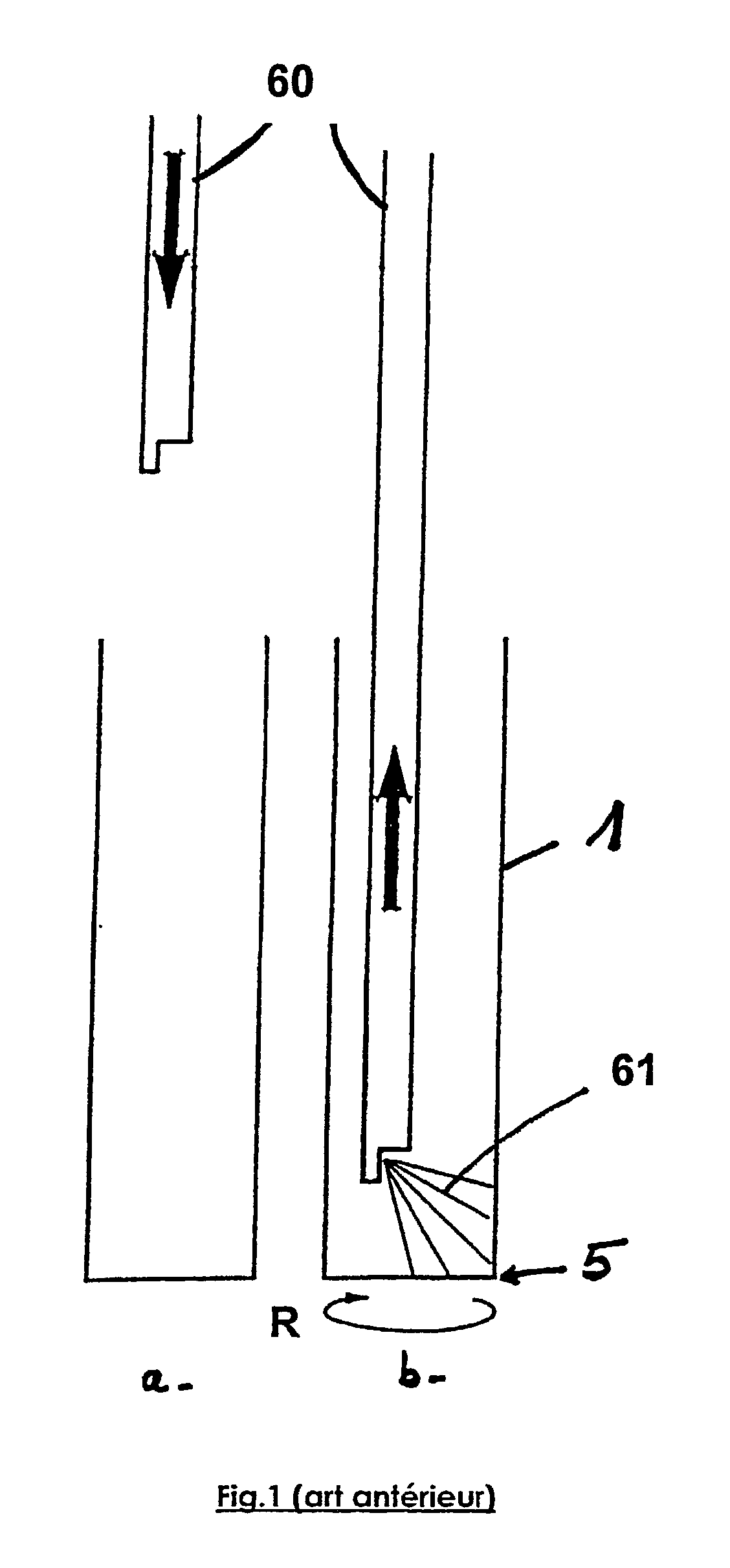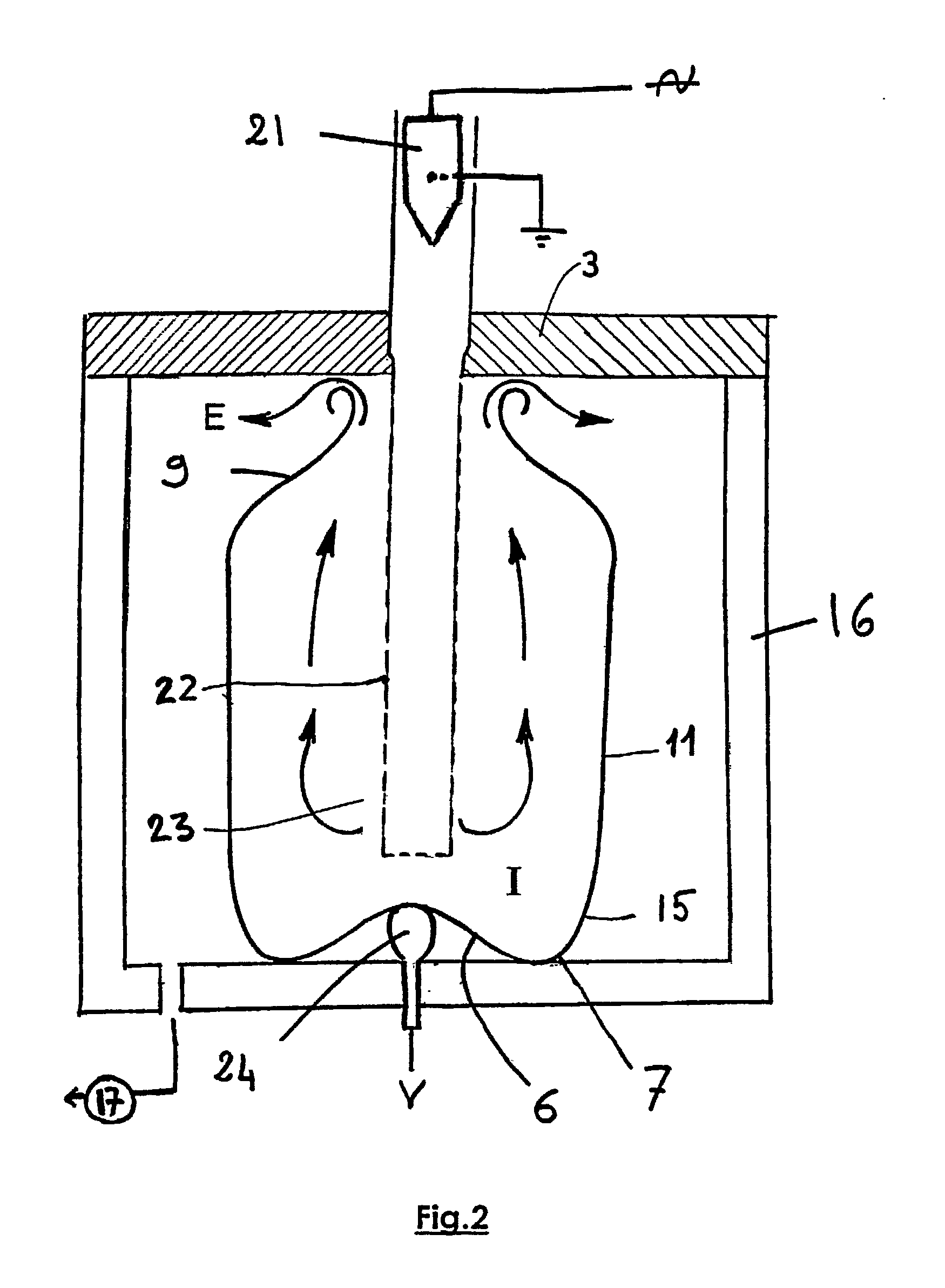Method for depositing a coating on the wall of metallic containers
- Summary
- Abstract
- Description
- Claims
- Application Information
AI Technical Summary
Benefits of technology
Problems solved by technology
Method used
Image
Examples
example 2
Deposition of a Mixed Carbon with Polymeric Tendency and Silica Coating on the Inner Wall of an Aerosol Container Blank (FIG. 3)
[0041] This example illustrates the first alternative embodiment of the invention. It consists of the deposition of a coating on the inner surface of containers in the middle of the production line, i.e. at a stage when the container is not yet coned. This stage is located in the production line exactly at the current varnish deposition stage of the prior art, which this method proposes to replace.
[0042] The electrode 32 has a shape fitting to within 2 mm the shape of the inner surface of a drawn extruded container blank 1. It is coated with a 20 .mu. layer of polypropylene. The base of the blank has already been shaped: it comprises a toric base 7 surrounding a concave dome 6. The electrode is pierced with a duct 31 used to supply the precursor gas P in the air gap between the electrode and the container.
[0043] The container is placed inside a coupling 30....
example 3
Deposition of an Alumina Coating on the Inner Wall of an Aerosol Container Blank
[0045] This example corresponds to the third alternative embodiment of the invention, where the deposition is carried out by corona discharge at the end of the production line, on already coned containers.
[0046] An electrode of a suitable shape is introduced into the opening: its orthogonal section has a contour comprising a large number of convexities and acute angles oriented outwards, but its outer contour has a diameter less than that of the opening (25.4 mm). As such, the metal electrode may be introduced easily into the already coned container (diameter of cylindrical body of container: 45 mm) and comprises longitudinal convexities and edges oriented towards the inner wall of the container.
[0047] The electrode is hollow, which makes it possible to supply the inside of the container with precursor gas. A tributyl aluminium (10%) argon (85%) and oxygen (5%) mixture is injected as the precursor gas.
[0...
PUM
| Property | Measurement | Unit |
|---|---|---|
| Length | aaaaa | aaaaa |
| Length | aaaaa | aaaaa |
| Pressure | aaaaa | aaaaa |
Abstract
Description
Claims
Application Information
 Login to View More
Login to View More - R&D
- Intellectual Property
- Life Sciences
- Materials
- Tech Scout
- Unparalleled Data Quality
- Higher Quality Content
- 60% Fewer Hallucinations
Browse by: Latest US Patents, China's latest patents, Technical Efficacy Thesaurus, Application Domain, Technology Topic, Popular Technical Reports.
© 2025 PatSnap. All rights reserved.Legal|Privacy policy|Modern Slavery Act Transparency Statement|Sitemap|About US| Contact US: help@patsnap.com



